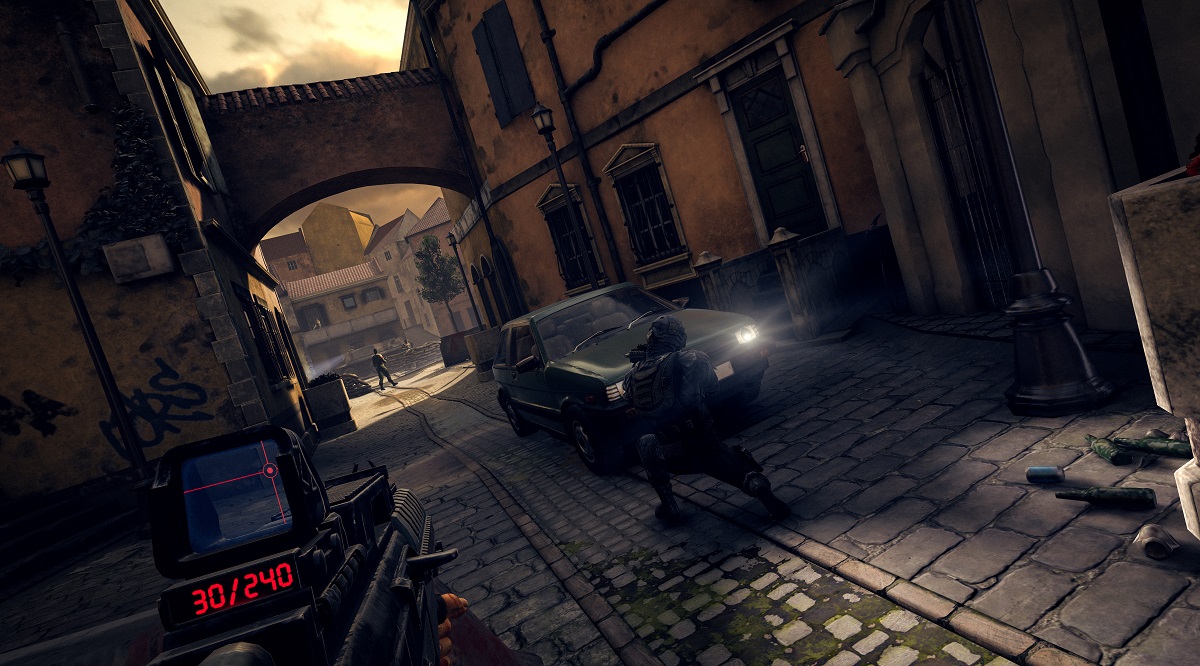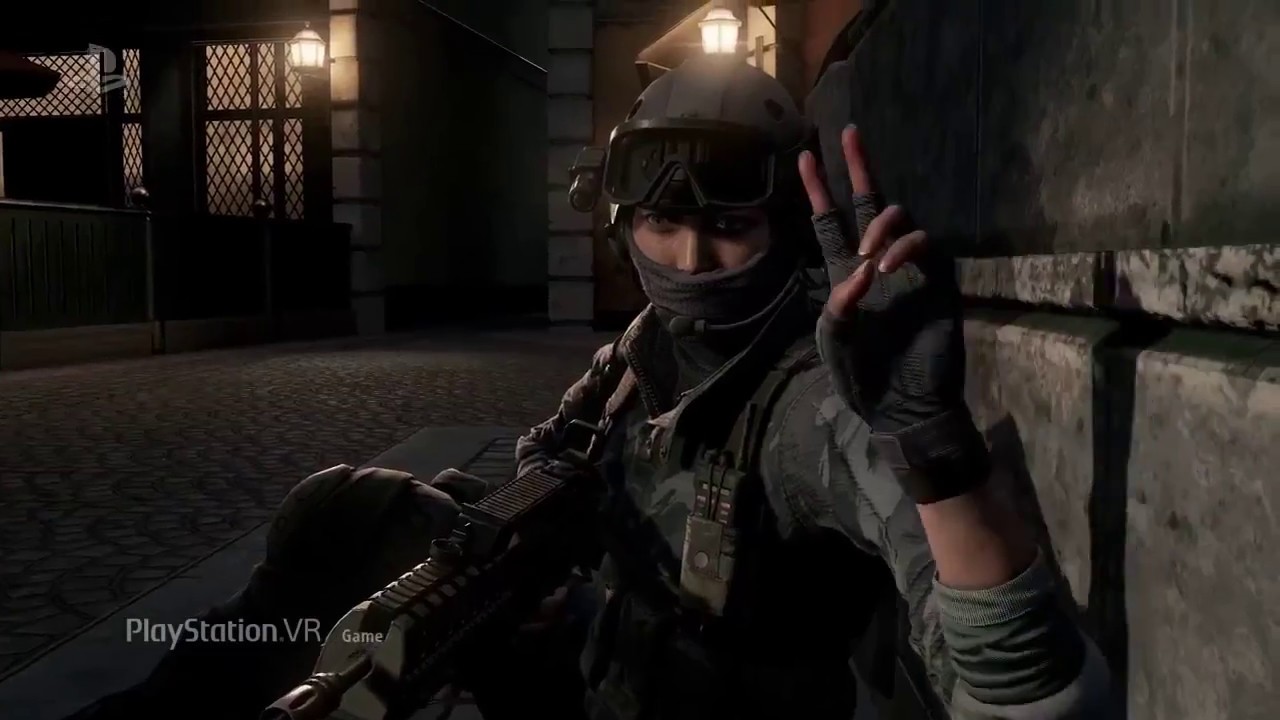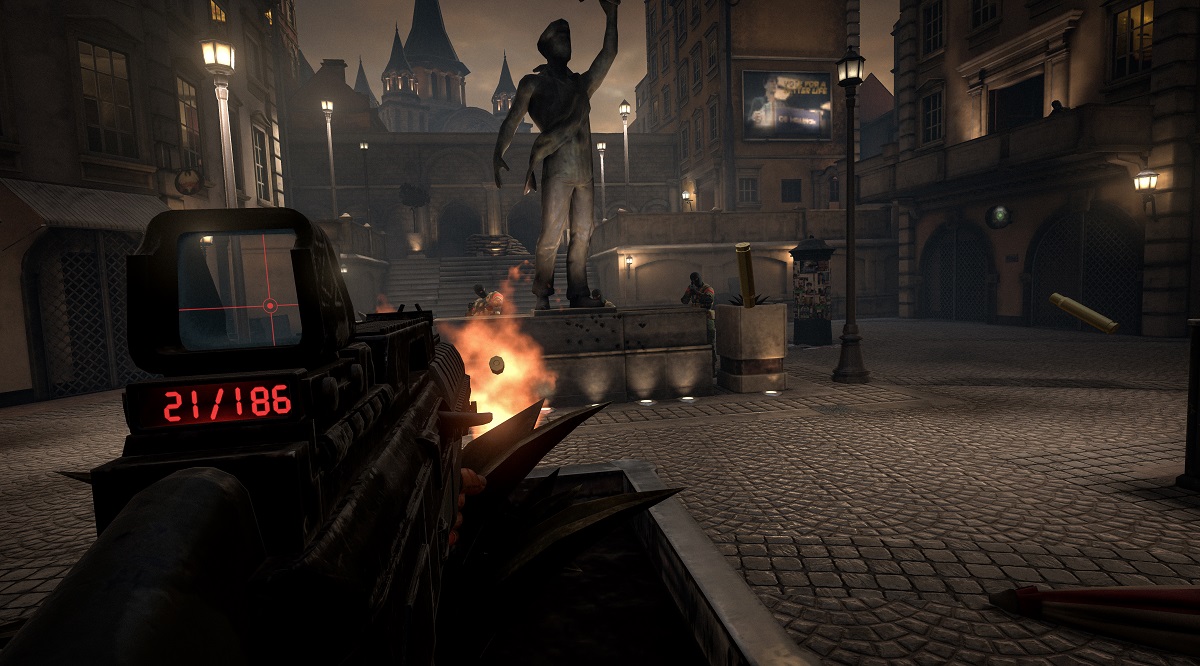When I first played Bravo Team back at E3 last year it immediately reminded me of the classic arcade game, Time Crisis. The comparisons are obvious: you pop in and out of cover shooting at bad guys and the game predetermines your path through levels. And for better and for worse, that comparison holds true for the final product as well.
In Bravo Team you take control of a military officer after a terrorist attack that results in the assassination of a key political figure. You and your partner have to fight your way across a city to get extracted, killing countless soldiers and enemies along the way. The majority of the game gives you a trusty assault rifle with a red dot sight and a pistol sidearm. Occasionally it mixes up things with different weapons (like a sniper) and some intense set piece moments.
In the video above you can see me play through the entire Prologue and the first Bridge mission. All in all the entire game takes only about 3-4 hours to complete when playing alone with an AI partner, but that time would likely be even less if you were playing with a real human ally.
The AI partner does a good enough job of feeling useful, taking out a few enemies here and there, and attracting some attention when you send them out into the middle of a firefight. But overall there isn’t really a good replacement for having another real person by your side.
When you’re both using PS Aim controllers, crouched down behind a busted up car, poking your head out or blind firing from cover, it really does start to feel like you’re at war a bit. These are the special moments when all of Bravo Team’s moving parts fall into place just right. However, those moments of brilliance are few and far between.
The reality of Bravo Team is that it’s a very thinly veiled wave shooter that lets you move from cover point to cover point with little actual control over your character other than where he aims his gun to shoot. Once you choose a new cover spot during a mission, your character then runs forward as you have an out-of-body experience and can no longer control anything. Instead, you sit back and watch your soldier run forward to the spot you marked.
I get the need to cater to those that suffer from motion sickness, but this does not feel like the right solution. It’s been attempted in other games, like Front Defense: Heroes and From Other Suns, but it never comes across as a competent solution. The issue is that it totally ruins the immersion by literally removing you from the body of your character. You can’t really earn back a believable sense of presence after that.
It’s also extra jarring in Bravo Team because, unlike in those other two games, you can’t control anything once your character starts moving in third person. This means that even if you get shot during movement and wish you could cancel the movement and retreat, you can’t — they just keep moving forward with no regard for the world around them. It can be infuriating.
It’s also extremely common for your orientation to the world around you to shift and change between cover points meaning you may turn to your left to select a cover point, but then end up facing a different direction entirely once you arrive.
Each of the game’s missions occur one after another and are almost entirely linear. There are some branching paths in how you approach a few of the convergence points, but the experiences won’t vary much in any case.
You’ll start out at one end of the level, be tasked with clearing out enemies as you make your way to the end, and then just rinse and repeat until completed. The second level, Alleys, introduces some stealth-gameplay elements, but they never get expanded on and the lack of agency/control over your character makes any stealth moment even more frustrating than it would have been otherwise.
The Score Attack mode is an effort to expand the game’s replayability, but the stages are basically just rehashes of the campaign’s levels. Even the voiceovers from your in-ear navigation NPC is the same. The only difference is you’re trying to kill enemies more quickly to rack up points.

It’s worth mentioning that technically you can play Bravo Team with a DualShock 4, but I don’t think I’d recommend it. This game was designed from the ground up for the PS Aim and that’s really the only way it should be played. That’s the whole reason they’re bundling the two together, for example. Playing with two PS Move controllers is slightly better, but it doesn’t really feel the same as holding an actual physical rifle peripheral like the PS Aim.
When Farpoint released last year as the PS Aim controller’s launch bundle, it showed us a bold future of first-person shooters in VR. The level designs weren’t overly creative, but it offered a real, legitimate shooter experience with a solid campaign, addictive challenge levels, cooperative multiplayer, and then eventually competitive multiplayer as well. It felt like a real, complete package.
Bravo Team on the other hand doesn’t even let you freely move around levels. And in terms of Supermassive Game’s VR projects, it’s a significant step back from the exhilarating Until Dawn: Rush of Blood and innovative designs of The Inpatient.
When Bravo Team was announced at E3 last year it looked like an exciting, tactical shooter that would let players navigate environments in cooperative multiplayer. It more or less looked like the PSVR’s very own Onward or Rainbow Six. In reality it’s just another wave shooter, even if it uses a nifty gun controller. If you’re waiting on a more fully-featured shooter for PSVR, then keep an eye on Firewall: Zero Hour instead.
Bravo Team releases today exclusively for PSVR. Read our Game Review Guidelines for more information on how we arrived at this score.



























